The Differences in New Make Spirit and Effect of Still Shape and Size on Flavour
let’s begin
New Make Spirit is the name given to Whisky before it becomes Whisky.
Essentially, this is the liquid that comes out of the stills to be barrelled and matured.
It is often said that the flavour in the Whiskey comes primarily from the barrel, and while this is not entirely untrue, there is still a lot that can be said about the effect of the still and the New Make Spirit that comes out of it.
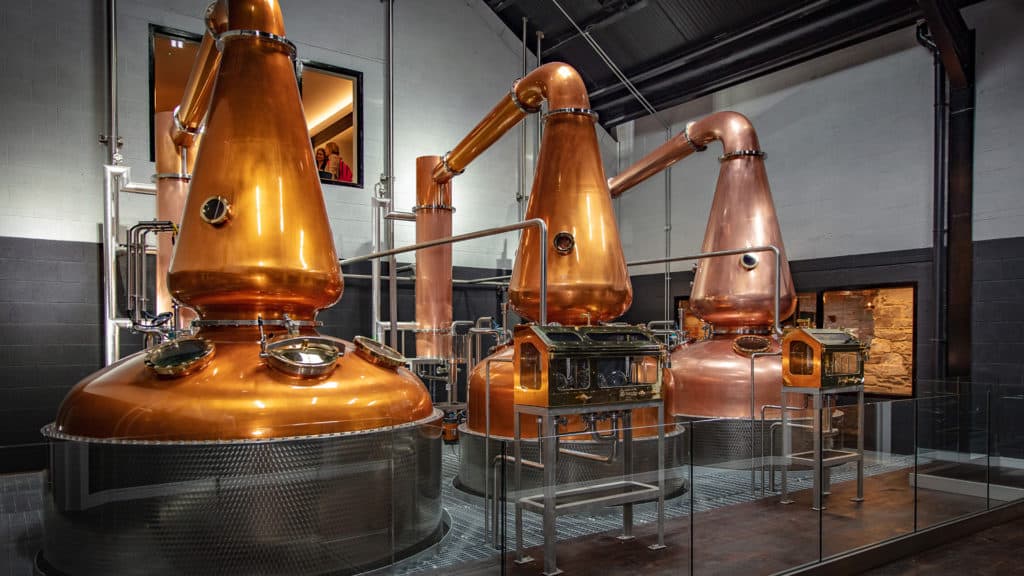
There are two types of stills used in any distillery, wash stills and spirit stills.
The first, the wash still, is where the first distillation takes part.
A beer like liquid with a low ABV is pumped into these where it is heated to the boiling point of alcohol. This works on the principle that alcohol boils at a lower temperature than water, meaning the alcohol boils off first, allowing it to be collected and sent to the spirit still.
In the spirit still the ABV is a bit higher, around 20-30%. Another distillation takes places here, with the ABV of the final liquid after distillation aiming to be around 60-70%.
So what effect does the size and shape of these stills have on the final product?
The size and shape of the still can depend on different factors.
The Lower Half
The lower half is more likely to be domed if the still is heated using direct heat, such as burning coal or gas. There are only a few distilleries – including Glenfarclas, Glenfiddich and The Macallan – that still use direct heat.
The dome shape allows the flame to curve upwards to create an even surface over which the liquid will be heated.
If the still is heated using steam, as is more common, it will have a conical bottom, as this allows the remnants of the distillation to flow out more easily.
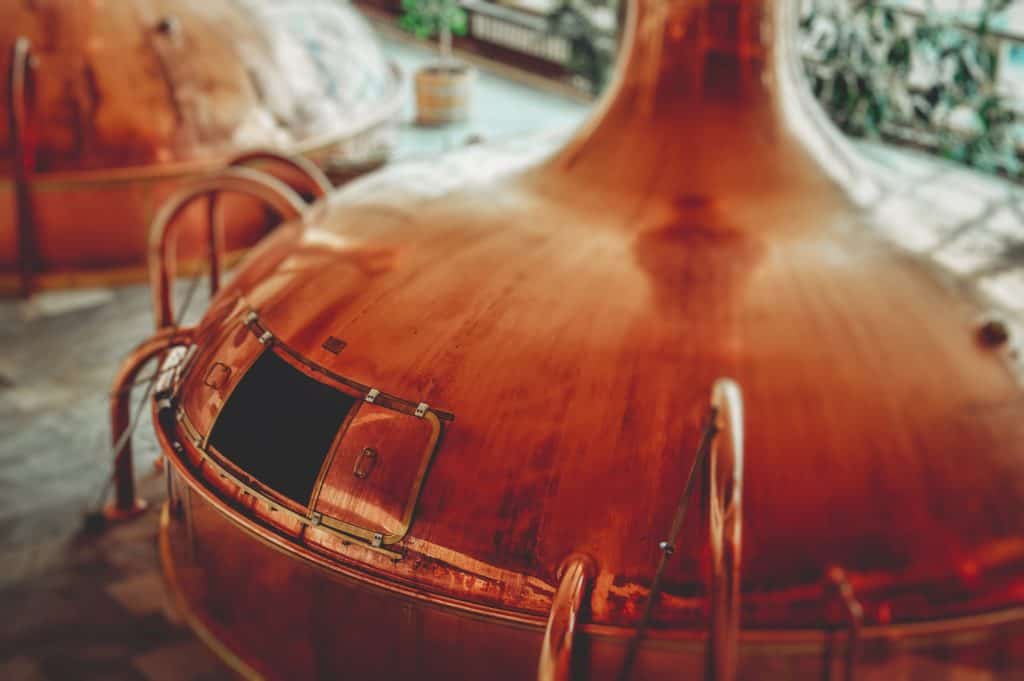
The upper Half
Despite this, it is the upper half of the still that will have more effect on the final flavour. It can be divided into three areas, the body, the neck and lyne arm. Each of these will have a different effect on the New Make Spirit.
The body is heated, making the liquid in the still rise into the neck. Once it reaches the neck it will condense against the copper sides and drop back into the body.
As the temperature increases, the particles with the lowest boiling temperature will be the first to reach the lyne arm, where they then flow into the condenser.
These are typically the lightest particles. The taller the still is, the more chance the particles have of separating, as they all have different boiling points.
In Glenmorangie the stills are very tall. This means there is further for the particles to go and therefore, the lighter the particle the more chance it has of reaching the condenser. This results in a final product that is quite light in character.
In contrast to this, Lagavulin has short and wide stills, meaning the particles are not as separated, creating a spirit that is heavy in character.
Constrictions and Boil Bowls
Some stills may also have a constriction between the body and the neck, which recreates the effect of a tall neck by interrupting the vapour column in the middle of the still. Distilleries such as Glenkinchie, Auchentoshan, Glenfiddich and Ardbeg use stills with these features.
This can also be achieved through the use of a boil bowl or reflux bowl, such as the stills at Strathmill, Dalmore, Deanston and Glenfarclas. The bowl acts as a cooler where heavier distillate condenses and drops back into the spirit.
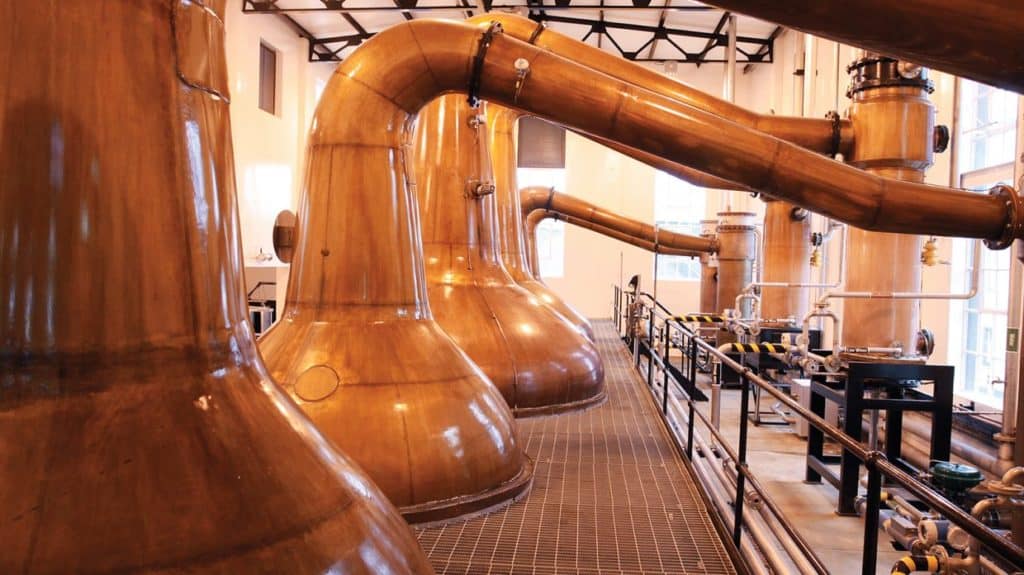
Purifiers
Purifiers are also used to make the final product more refined. They act to condense the heavier substances back into the pot, allowing for a lighter spirit to be made.
Talisker, Glen Grant, Strathmill, Ardbeg and Tormore all use purifiers.
The use of purifiers alongside a boil bowl and a tall still will result in a very light spirit. On the other hand, the use of a short and wide still, with none of these features creates a heavy and oilier new make spirit.
Still size and shape is not the only thing that effects flavour, as heat and contact with the copper walls of the still will also alter the taste. But these are still important factors to consider when investigating the differences in New Make Spirit.
Is there something you want to know about the whisky making process? Let us know in the comments!



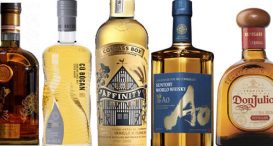





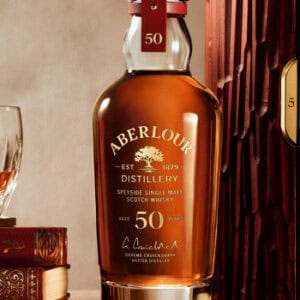

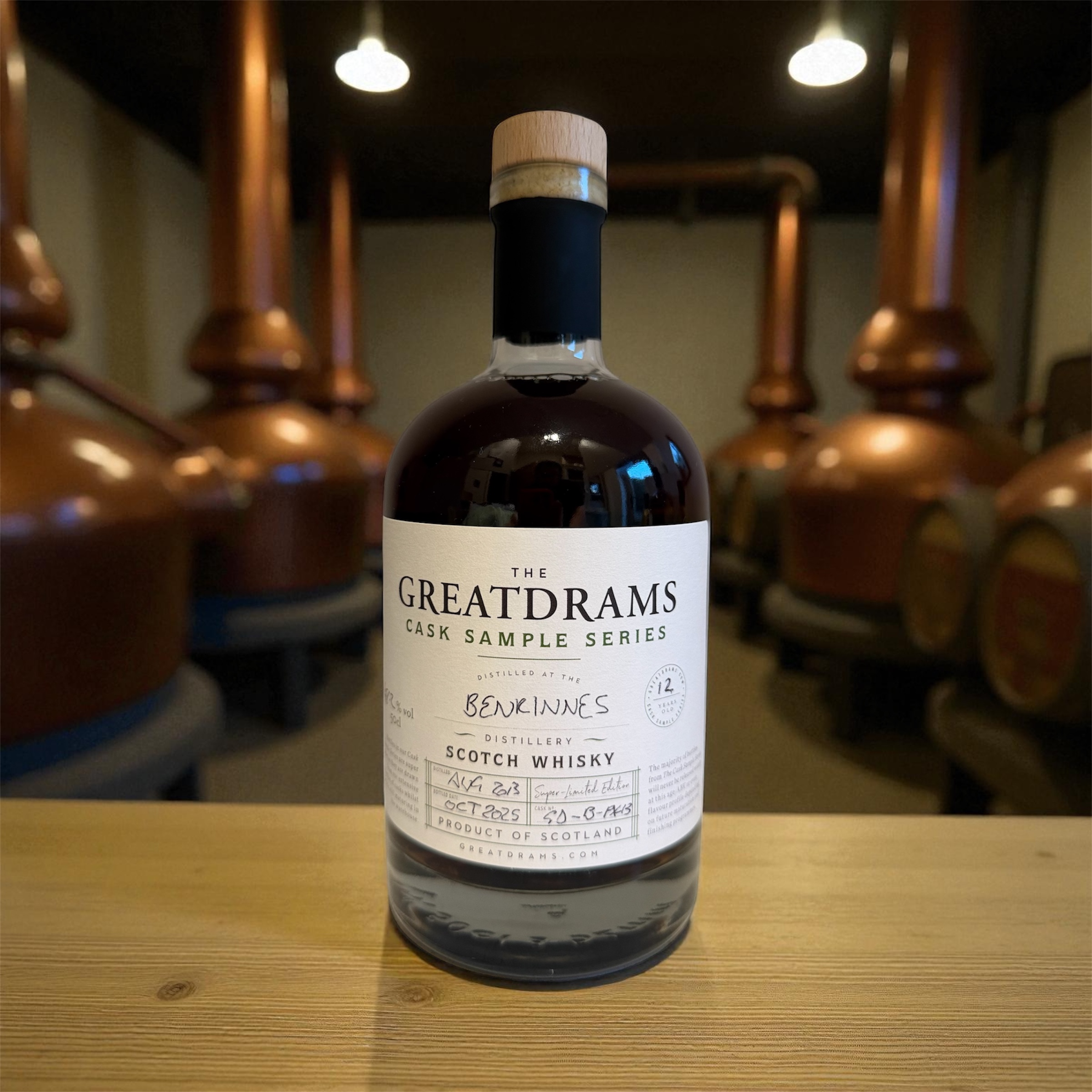
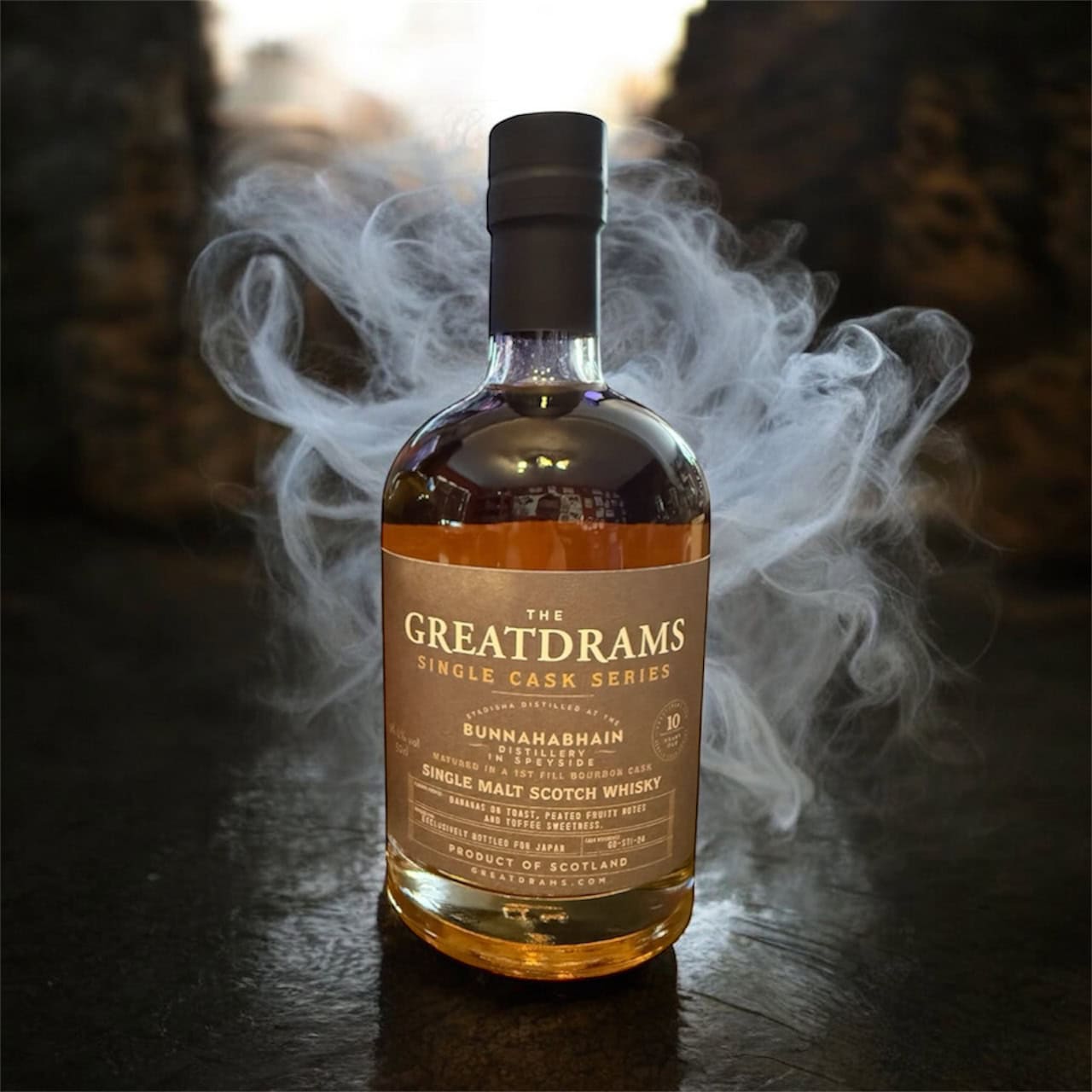
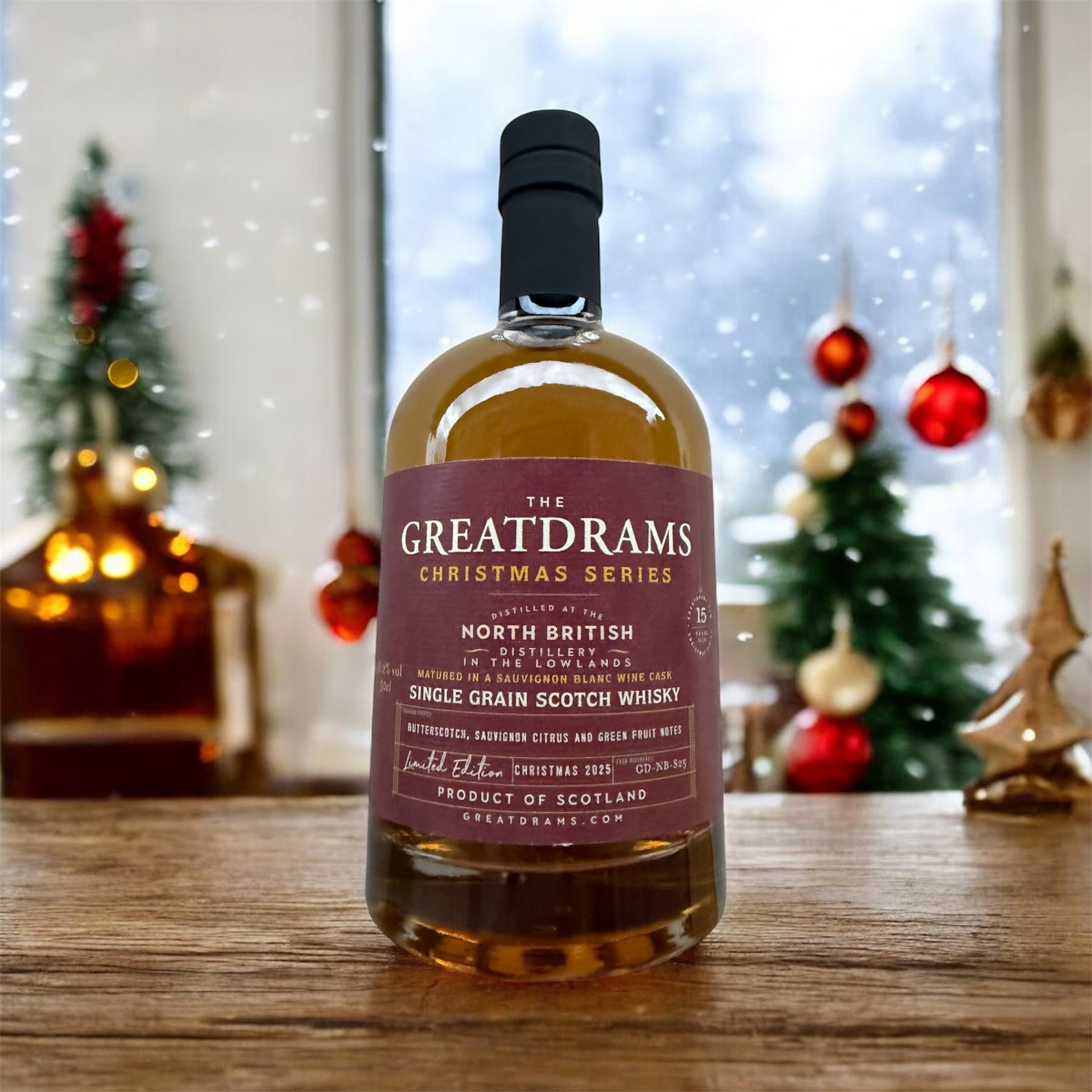

1 thought on “The Differences in New Make Spirit and Effect of Still Shape and Size on Flavour”
HI
I am curious about new make spirit having been a whisky drinker for many years this is a new one on me. The reason specifically that has sparked my interest is since meeting my Japanese partner I have widened my tastes and amongst other things got into making our own umeshu. This has been done simply with plums, vodka and varying the sugar each batch.
From this I wondered about making umeshu with whisky but as I read up on whiskies I discovered new make spirit. Thereby I was hoping to ask for any insight or suggestions you might be able to offer around new make spirit as an option for umeshu
thanks